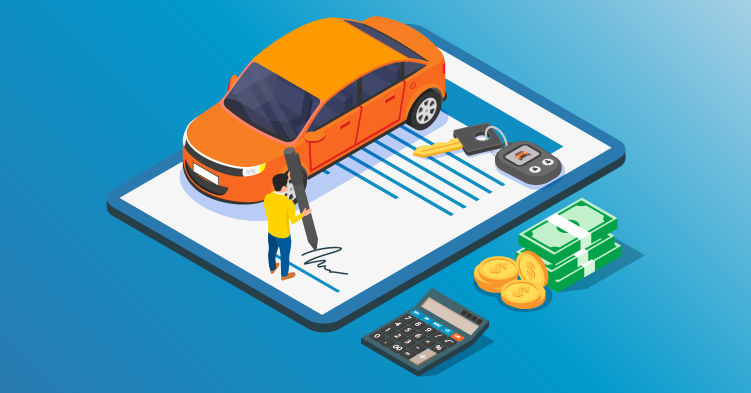A bank account can provide you with services that a piggy bank or a spot under your mattress can’t. It offers security, to start, plus the convenience of features such as online bill pay. And because banks tend to favor existing customers, you may also be able to take advantage of financial products such as credit cards, debit cards and personal loans.
But what if you have bad credit?
While bank accounts offer many benefits, things can get a little complicated if you have spotty credit history. You may be wondering, “Can I open a bank account with bad credit?”
The answer is yes — but you’ll want to watch for things like fees and penalties, which often get tacked onto bank accounts for consumers with low credit scores.
Here’s what you need to know when opening a bank account with bad credit.
Where can I open a bank account with bad credit?
There are a number of account options available for those with a low credit score. Before opening a bank account, compare different types of financial institutions and their terms.
Traditional banks. If you prefer physical locations and in-person representatives, you may want to open a bank account with a traditional bank. Because these institutions have been around for decades (or over a century, such as Wells Fargo), they may feel like a safer option as well.
However, traditional banks can’t always offer the same perks as online banks due to their stricter requirements. They have more overhead costs, and they may charge you more in fees.
If you’re considering a traditional bank, be sure to find one that offers services and features that meet your personal finance needs. For instance, some banks are more technologically advanced than others. If you prefer a digital banking experience, look for a bank with a mobile app where you can manage your account conveniently.
Online banks. Online banks may offer fewer fees and higher interest rates due to their low overhead costs. Like traditional banks, they are also “member FDIC,” so your money will be insured. Plus, many online banks run soft credit checks, which do not affect your credit score.
Online banks strive to be as user-friendly as possible. Their mobile banking capabilities are often more advanced and simpler to use thanks to their tech-forward approach. There are no physical locations to visit, but you can talk to a representative via phone, live chat or email if you need assistance.
Credit unions. In order to open an account with a credit union, you must be a member, which comes with requirements. However, if you do meet the requirements, you may be satisfied with the lower fees and banking services that credit unions may offer.
Like traditional and online banking, opening an account with a credit union is safe. The National Credit Union Administration insures accounts with credit unions.
Things to consider before opening a bank account with bad credit
Consider the different fees your financial institution charges, and determine which ones you can avoid. The following is not an exhaustive list, so make sure you understand every fee your bank can charge.
Transaction fees. Withdrawing excessively from your savings account can garner transaction fees up to $25. These fees can be avoided when you use a checking account for regular withdrawals. However, there may be a minimum amount of transactions necessary to show that your account is active.
Overdraft fees. These fees occur when you overdraw your bank account. A simple way to avoid overdrafting is to deposit checks with direct deposit. By signing up for direct deposit through your employer, your paycheck will automatically be placed into the account regularly, minimizing the risk of overdrafting. Traditional bank accounts offer overdraft protection for a fee, but this option may be limited for account holders with bad credit.
Monthly fees. A bank may charge you monthly fees for simply having an account with them. These fees can range from $4 to $25. You may be able to avoid monthly maintenance fees or service fees by opening a savings account and checking account with the same bank. Additionally, some banks will waive monthly fees if you set up direct deposit.
ATM fees. ATM withdrawals with out-of-network machines can cost you about $2.50 on average, which adds up if you withdraw often. Most fee-free ATMs are machines in your bank’s network, so be sure to use your bank’s online or mobile ATM finder.
Minimums. You may be required to have a minimum opening deposit when you open a new account. The minimum deposit amount is typically $25 to $100. Similarly, your bank account may have a minimum balance requirement.
Why don’t banks offer checking accounts to people with bad credit?
You can open a checking account or a savings account if you have bad credit. In fact, most banks don’t check your credit score.
Instead, they check your previous banking activity through a reporting agency called ChexSystems. Similar to a credit report, a ChexSystems report looks at your banking history to see if you have negative balances, unpaid bank fees, bounced checks and overdrafts. Your report is wiped clean every five years, so if you demonstrate five years of responsible banking habits, your ChexSystems score may improve dramatically.
Even if your bank history is not ideal, you still have options. Many banks offer second-chance bank accounts, also called second-chance checking accounts. These accounts are designed for account holders who need to practice better banking habits.
Drawbacks of a second-chance checking account include more fees and restrictions with fewer perks. However, some let you graduate to a regular checking account if good banking behavior is demonstrated over a period of time.
Do bad-credit bank accounts offer features and rewards?
Generally, features and rewards for bad-credit bank accounts are few and far between. If there are any features offered, you’re more likely to receive them with certain online banking institutions. But if you practice good habits to rebuild your credit, you can work your way to a traditional checking account with features and rewards, such as cash-back deals.
What is bad credit?
A bad credit score is a credit score in the “poor credit” or “fair credit” category. There are three major credit bureaus, and a commonly used independent analytics company called FICO. Each uses different considerations when calculating your credit score.
According to Experian, Equifax and FICO, a bad credit score is in the 300 to 629 range. TransUnion considers a score in the 300 to 660 range to be low.
Your credit score is a calculation of your creditworthiness based on your credit history. A high credit score is a good credit score, making you more appealing to lenders.




